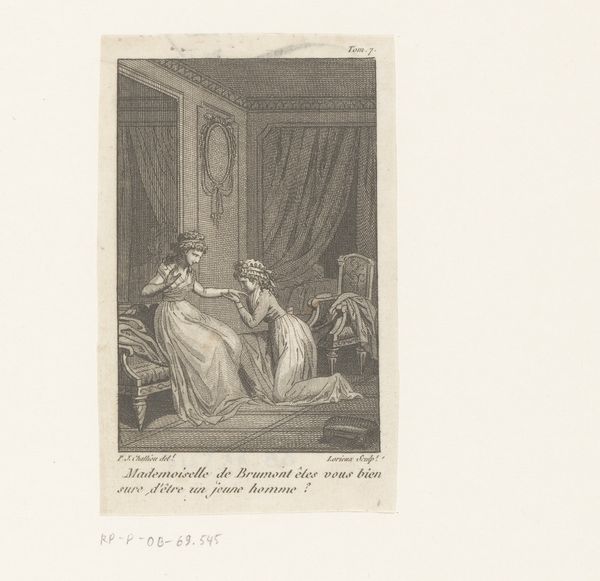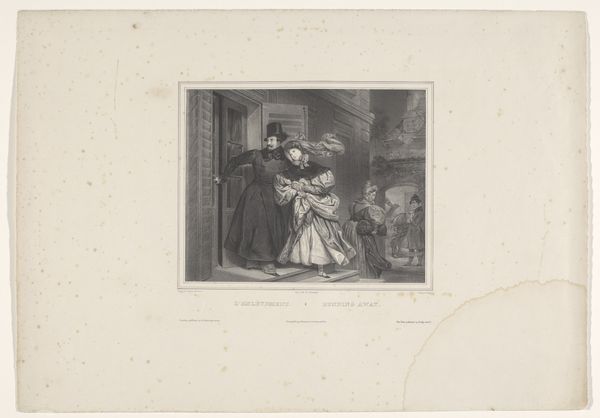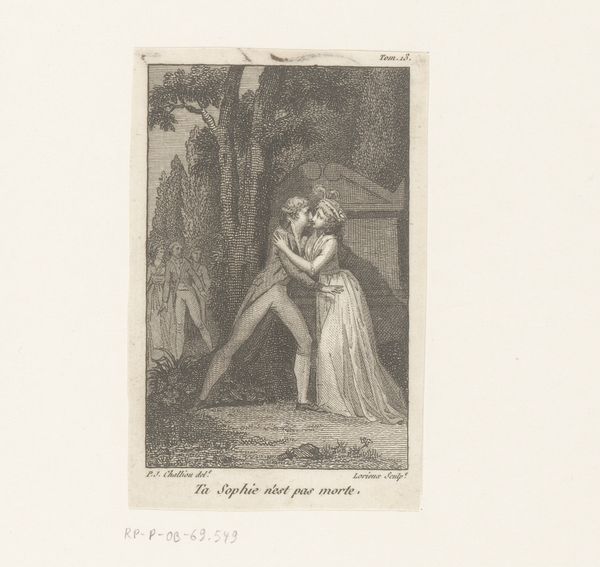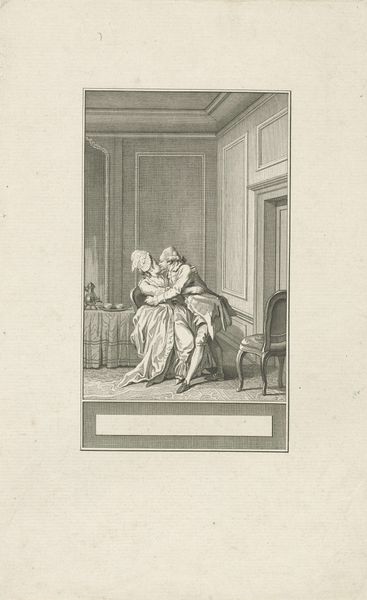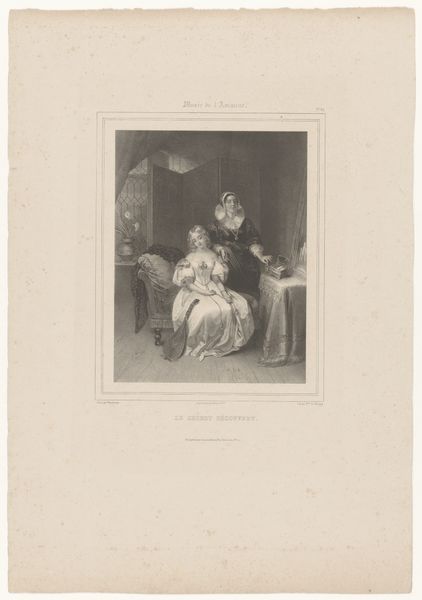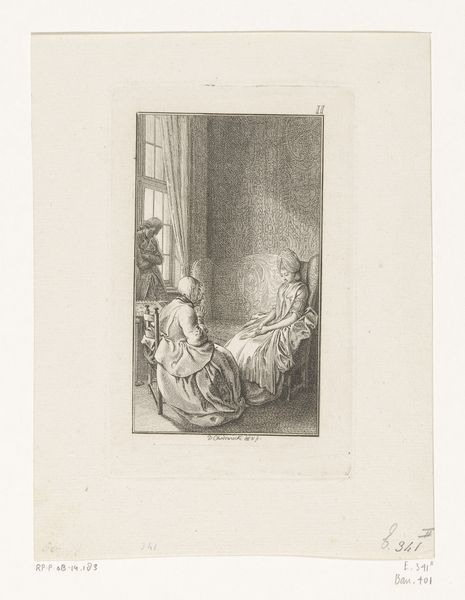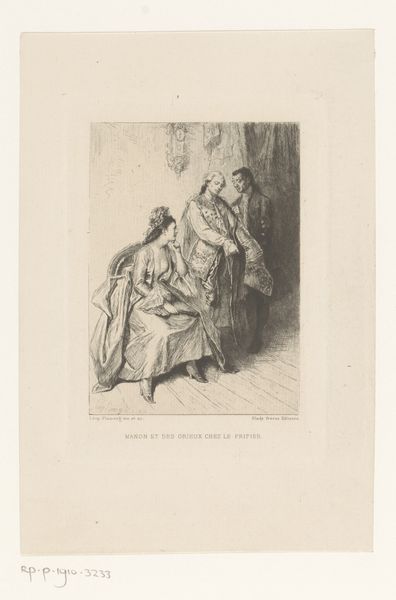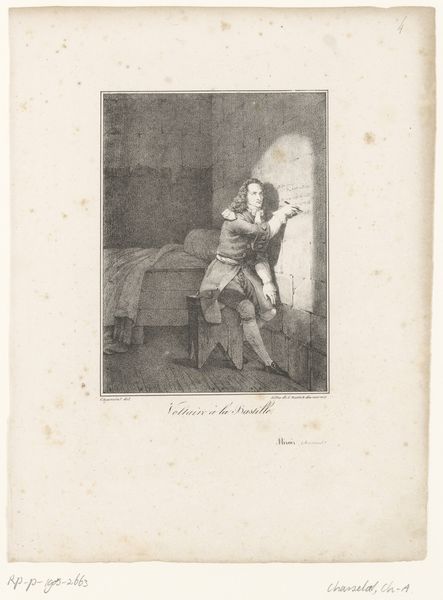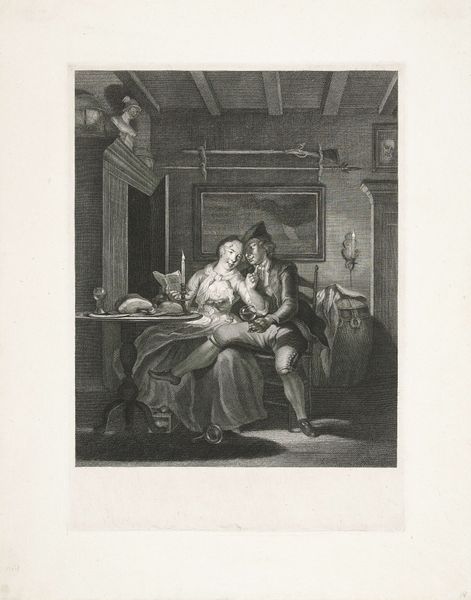
drawing, print, engraving
#
drawing
#
narrative-art
# print
#
figuration
#
romanticism
#
genre-painting
#
history-painting
#
engraving
Dimensions: height 98 mm, width 57 mm
Copyright: Rijks Museum: Open Domain
Curator: Immediately striking, isn’t it? The engraving, entitled "Man en vrouw in omhelzing"—"Man and woman in embrace"—dates back to 1791 and is by F.B. Lorieux. Editor: It's very…charged. I get a sense of urgency from the figures. The composition itself, the way she seems to rush in on him, almost interrupts his melancholy pose, it evokes something tempestuous. Curator: Yes, that romanticism style shines through, especially given the theatrical nature of the scene, and the way their emotions are so explicitly displayed in their postures. This period reveled in those dramatic personal narratives. It's interesting to think about what this "embrace" represents. It's definitely a symbolic crossroads. Editor: Crossroads indeed! Is this reunion born of true love, or does her ornate hat and trailing dress imply something more politically performative? Almost like a stage play happening within the domestic sphere. The fact that she’s making the first move also makes you wonder about how gender dynamics and power played out during that time. Curator: Intriguing question! Their clothing could very well reflect the ideals or aspirations of a particular social group, possibly referencing Enlightenment-era political ideals of freedom and equality finding their way into personal relationships. Or, even more simply, a reflection on social standing, and prescribed codes of social etiquette, defining emotional display in relationships. Editor: Precisely. Engravings such as this were, after all, widely disseminated. And the explicit reference, from P.J. Challiva's script “Dès que tu le peux tu m'échappes, et je ne me lasse pas de venir à toi la premiere.” “As soon as you can you escape me, and I never tire of coming to you first," also points towards that. This would be an image immediately accessible and relatable, in particular, for the rising middle classes. Curator: Definitely. Images like these functioned as a moral compass and mirror, reflecting anxieties or aspirations back at society, reinforcing values, through narrative depictions of love and drama. And in the context of Romanticism's focus on personal experience and emotional intensity, one finds encoded a deeper understanding of societal values. Editor: It serves as a stark reminder of art’s pivotal role in mirroring social and cultural currents, illustrating how personal stories weave themselves into the bigger tapestry of political life. Curator: Indeed; this print provides a snapshot of social ideals, personal conflicts, all framed within a carefully constructed visual narrative, that reveals deeper insights on humanity through symbolism and emotions.
Comments
No comments
Be the first to comment and join the conversation on the ultimate creative platform.

